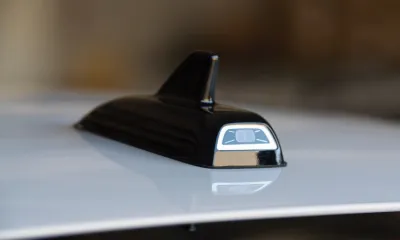Pulse Labs is excited to have guest author and seasoned auto industry executive Derrick Hatami contribute his vision and insights to this post. This is his second piece with us.
This blog follows up on our earlier one here, which discussed rules of thumb for planning for technology content in vehicle interiors. This follow-up discusses the tenets of marketing those technologies.
In decades gone by, the exterior of the vehicle captured consumers’ attention. Think fins, think 22-inch rims, think blacked-out trim, think headlights that swoop down the fenders to convey motion. Styling screamed out to potential buyers: “look at me!” Marketing just needed to point to those features and their visual impact would seal the deal. You’ll notice that EVs have their own emerging design language as well, including in many cases razor-thin headlights and taillights, filled grille openings, and modestly sloped hoods. And of course, EVs have an interior design language.

In fact, in today’s world the vehicle interior is arguably where the sale is more likely to happen—or not happen. That’s partly how the interior looks—that will always be important—but more importantly how the interior’s technology “partners” with the driver via human machine interfaces. So, the purchase decision will shift from visual factors to human factors. And that means marketing needs to follow suit. But how?
The first challenge is that the interior is not readily visible. The exterior is, so marketing can set the tone of what the vehicle represents, and the prospective customer sees one on the road and the exterior visually connects the dots.
The second challenge is that while traditional marketing can show design, it may struggle to convey an experience and, as important, the benefit of your vehicle’s experience to the prospective customers in general and compared to rivals.
For example, you can show people having fun on a rollercoaster, but that never conveys the genuine experience, nor can it convey how “rollercoaster one” is better than “rollercoaster two.” Fortunately, most people know what a rollercoaster is and what a good one should feel like--thrilling.

Vehicle interior design and technology are changing so quickly it’s almost a rollercoaster in and of itself. The difference is that much of that technology is so new that consumers don’t have a point of experiential reference, meaning what’s inside today’s vehicle may be a completely new world for most consumers. And that’s the third challenge.
How is marketing supposed to tackle that? An “experience” with no point of reference and no solid visual cues. Compared to the “scream” of exterior styling, an experience is more like a whisper. So, the big money question is how to make a whisper scream? The answer may be like marketing perfume. You can’t convey the smell, so you convey the joy of wearing it and how it makes the wearer feel better about themselves. How it makes your life better. How it elevates your game, instills confidence, says something subtle about you. Unlike technology, however, perfume has an amazingly simple and known user interface: a spritz or a dab.

While perfume may require an olfactory validation, technology can be demonstrated to a large extent through the eyes, ears, and touch. That means automotive brands will need to leverage AR / VR / MR to provide a more immersive interior experience that can be consumed digitally and remotely.
Allowing consumers to interact with the vehicle interior and experiment with the technology virtually can serve as the bridge between online shopper and showroom visit and test drive. As the virtual experience continues to advance, it could eventually minimize the need for the showroom visit, particularly if vehicle technology becomes more ubiquitous in the same way that standardization impacted personal computers (now down to a few standard specs).
Converting a whisper to a scream is an all-new challenge for automotive marketing and one that simultaneously needs to:
(1) educate the prospect on what the technology is,
(2) explain how it makes their lives better (functionally, in terms of convenience, and image-wise),
(3) highlight why the technology is different (or if not different, highlight how your application of it is better),
(4) set attainable and realistic expectations for what the technology does to make the buyer's life better,
(5) give it a catchy brand name that is simple and clear,
(6) ensure that showroom salespeople are up to speed and well-informed to overcome any “nuances” that could confuse customers during a test-drive or after purchase, and
(7) convey all this using audience-appropriate marketing technology and channels that emphasizes the technology most relevant to the target customer.

Quantifying that feeling and showing the advantages of your technology over a rival’s is where Pulse Labs ICCTM (In-Car Camera) solution comes in. While often used for product development, it’s also extremely useful for unbiased and naturalistic HMI benchmarking and for documenting advantages to help sell the vehicle and driving adoption afterward. It’s also crucial for identifying any issues that made it through testing in real-world conditions so it's the best it can be right out of the gate and can keep the promises marketing makes.
· The advantages can be used in marketing and dealer training.
· Knowing the issues informs over-the-air updates and next generation product upgrades.
Not having these insights puts your marketing at a disadvantage, which hurts marketing ROI, sales potential, and loyalty. Contact info@pulselabs.ai for more information and a demonstration of ICCTM.
About Derrick Hatami: Derrick is a seasoned senior executive with rich experience in the Automotive arena. He has held executive roles at OEMs, such as Vinfast, VW, Hyundai and Nissan, and at leading researchers, such as J.D. Power and Accenture. He has launched several new products and led large organizations in numerous functional areas including Sales, Marketing, Strategic Planning, Market Research, Product Planning, Customer Experience and Aftersales.




